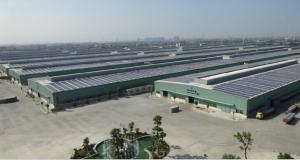Utl Solar Inverter
Utl Solar Inverter Related Searches
Best Inverter Solar Panel Solar Panel On Roof Rack Inverter To Solar Panel Ratio Solar Panel Decking Lights Solar Panel Inverter Box 1000 Watt Solar Panel Inverter 12 Volt Solar Panel Inverter Plastic Solar Lanterns Buy Solar Panel Inverter Solar Panel Inverter CostHot Searches
Type Of Inverter For Solar Types Of Inverter For Solar Used Solar Inverter For Sale Inverter Size For Solar System Solar Edge Inverter For Sale 5kw Solar Inverter For Sale Solar Inverter For Sale Solar Inverter For Battery Solar Inverter For Split Ac Solar Inverter For Laptop Solar Inverter For Fridge Solar With Inverter Price Solar Inverter With 2 Battery Solar Inverter Price In China Best Solar Inverter In China Solar Inverter Price In Dubai Solar Inverter Price In Uae Solar Inverter Price In Kenya Solar Inverter Price In Kerala Solar Hot Water Collectors For SaleUtl Solar Inverter Supplier & Manufacturer from China
Okorder.com is a professional Utl Solar Inverter supplier & manufacturer, offers integrated one-stop services including real-time quoting and online cargo tracking. We are funded by CNBM Group, a Fortune 500 enterprise and the largest Utl Solar Inverter firm in China.Hot Products
FAQ
- There are three main types of solar inverters: string inverters, microinverters, and power optimizers. String inverters are the most common and cost-effective option, where multiple solar panels are connected in a series and the inverter converts the DC power from the panels into AC power for use in the home. Microinverters are installed on each individual solar panel, converting DC power to AC power directly at the panel level. Power optimizers are installed with string inverters and optimize the output of each solar panel individually, ensuring maximum energy production.
- What is the difference between a PV inverter and a solar inverter?
- The main component of the inverter is the three-phase bridge converter. The main purpose of the grid-connected inverter is to change the power to DC and change the AC power. The main purpose is to improve the power quality (because the wind power generation is very large
- The role of a frequency regulation feature in a solar inverter is to ensure that the power output from the solar panels matches the grid's frequency and voltage requirements. It helps maintain a stable and consistent frequency, allowing for seamless integration of solar power into the existing electrical grid.
- Solar inverters typically last for around 10 to 15 years, although some high-quality inverters can last up to 20 years with proper maintenance and regular inspections.
- Yes, a solar inverter can be used with a solar-powered remote sensing system. The solar inverter is responsible for converting the direct current (DC) generated by the solar panels into alternating current (AC) that can be used to power the remote sensing system.
- The role of a solar inverter in optimizing energy production is to convert the direct current (DC) electricity generated by solar panels into alternating current (AC) electricity that can be used to power homes and businesses. In addition to this basic function, a solar inverter also plays a crucial role in maximizing energy production by efficiently managing the flow of electricity, ensuring that the solar system is operating at its highest capacity, and adapting to changes in sunlight intensity to achieve optimal energy output.
- A solar inverter handles grid voltage variations by constantly monitoring the grid voltage and adjusting its output accordingly. It uses complex algorithms to regulate the voltage and frequency of the electricity it feeds into the grid, ensuring it matches the varying grid voltage. This allows the solar inverter to maintain a stable and consistent power output, regardless of any fluctuations in the grid voltage.
- A centralized solar inverter system involves connecting multiple solar panels to a single inverter, with all the panels connected in series. The combined DC power generated by the panels is then converted into AC power by the centralized inverter. On the other hand, a decentralized solar inverter system, also known as microinverters or power optimizers, consists of each solar panel having its own dedicated inverter. In this system, each panel operates independently and converts its DC power into AC power directly at the panel level. The main distinction between the two systems lies in their architecture and power conversion methods. In a centralized system, the overall power output of the entire array depends on the performance of a single inverter. If any panel in the array underperforms due to shading or malfunction, it can significantly impact the overall system's performance. Additionally, a single inverter can limit design flexibility and system scalability. In a decentralized system, each panel operates independently, allowing for greater flexibility and optimization. The individual inverters in a decentralized system can maximize the power output of each panel, regardless of shading or performance variations. This also means that the overall system performance is less affected by the underperformance of a single panel. Moreover, decentralized systems offer better scalability as additional panels can be easily added without the need for significant system redesign. Decentralized systems also provide improved monitoring capabilities, as each inverter can provide real-time data on individual panel performance. This simplifies troubleshooting, maintenance, and issue identification within the solar array. To summarize, while a centralized solar inverter system is a simpler and more cost-effective option, a decentralized system offers better optimization, scalability, monitoring, and performance reliability. Choosing between the two systems depends on factors such as system size, shading conditions, budget, and desired level of control and flexibility.














































